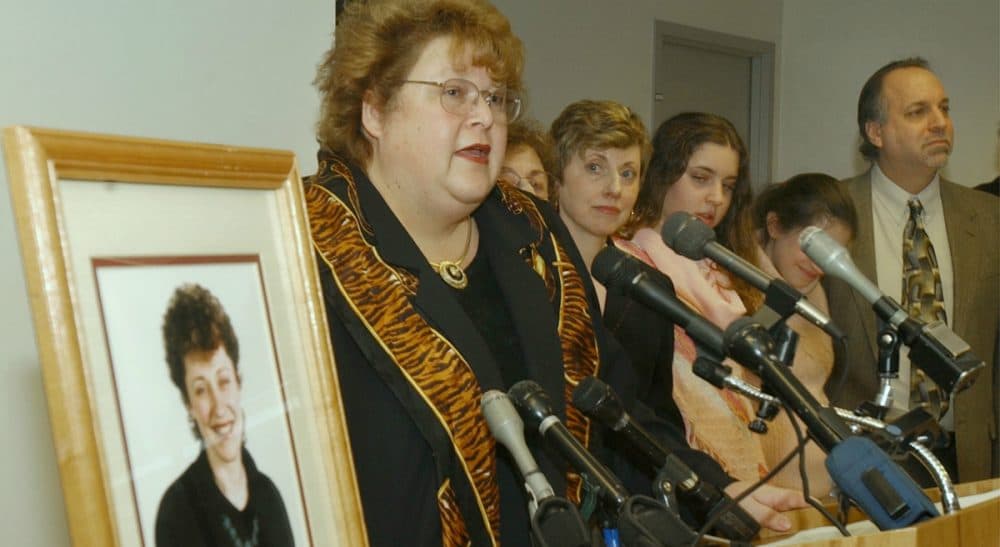Advertisement
How The Betsy Lehman Center For Patient Safety Could Live Up To Its Name

Twenty years ago this month, the Boston Globe disclosed that health columnist Betsy Lehman, a 39-year-old mother of two, had been killed by a drug overdose during treatment for breast cancer at Dana-Farber Cancer Center. In laying out a grim trail of preventable mistakes at a renowned institution, the Globe prompted local soul searching and a new focus on patient safety nationally.
Although I didn’t know Betsy personally, we were about the same age, had two kids about the same ages and were in the same profession. (I, too, was a health care journalist.) That’s why I was particularly disappointed by a recent conference celebrating the reopening of the Betsy Lehman Center for Patient Safety and Medical Error Reduction. It was heavy on statistics and poll results; e.g., one in four Massachusetts adults say they’ve seen an error in their own care or the care of someone close to them.
While it's true that Boston is the epicenter of thinking, writing and speaking about patient safety, words do not always translate into deeds.
What the meeting lacked was urgency, the kind of poking and prodding of established interests that journalists are good at. In that spirit, let me suggest two demands the Lehman Center should make on behalf of patients. First, every hospital should publicly release timely, comparable and usable safety information. Second, every hospital should publicly commit to a “no preventable errors” goal and a strategy to reach it.
These two actions would save lives -- locally, and also elsewhere as the prestigious local medical community sets a national example for others to follow. While it's true that Boston is the epicenter of thinking, writing and speaking about patient safety, words do not always translate into deeds.
Preventable hospital errors kill as many as 400,000 people annually. Harvard’s Dr. Lucian Leape famously contrasted the secrecy of hospital errors’ with the public nature of plane crashes. Unfortunately, accessible, consumer-friendly information about safety at individual hospitals is still elusive. Dana-Farber’s website, for example, discusses its commitment to safety -- which has been extraordinary — but the hospital nonetheless prefers to tell rather than show.
The list of quality measures uses technical language, provides no benchmarks and mostly has information dating back to 2013. (The federal HospitalCompare site similarly has long delays in posting data and isn’t easy to use, and state data isn’t much better.) Some other local hospitals are more forthcoming, but many resemble old-time burlesque dancers, seemingly revealing all while actually showing not much of interest.
There’s a better model. Louisville-based Norton Healthcare discloses a long list of safety and quality indicators and uses color-coding to show how those numbers relate to a desired goal. There are state and national comparisons and clear rules. Among them: “We do not decide what to make public based on how it makes us look,” and “We give equal prominence to good and bad results.” Norton has been doing this for 10 years.
Advertisement
The state-run Lehman Center should challenge Massachusetts hospitals to meet that candid standard by this time next year. Hospitals should also post information when they know it’s valid, rather than waiting for the feds. Every patient should be able to get the kind of information Betsy Lehman might have put in her column.
Transparency works best when it fuels accountability. Although “first, do no harm” is a professional ideal, few hospitals have adopted “zero preventable harm” as an explicit goal. Most settle for voluntary industry efforts with carefully calibrated harm reductions and multi-year timetables.
Why this is so is unclear, but one barrier is concern over the “business case” for patient safety; i.e. does improving safety help the bottom line. Though the public rarely sees this discussion, one recent medical journal article presented the return on investment (ROI) from preventing bloodstream infections in kids with cancer! The article emphasized the “low cost of implementation” and “high value” of “prevention efforts in this population.”
Doctors don’t promise to “first, do no unprofitable harm.” The Lehman Center should challenge every hospital to make zero preventable harm an explicit goal and have a plan in place to achieve it.
Every patient should be able to get the kind of information Betsy Lehman might have put in her column.
The two life-saving actions I’ve proposed require nothing more than a sustained commitment to ensuring that every patient receives care as safe as you’d want for your father or your child. I still remember the haunting letter Betsy Lehman’s mother sent to a patient safety conference some 15 years ago. Mildred Lehman wrote:
May I appeal to you to pause for a moment, if you will, in your important task. For in the wings outside your busy meeting rooms may be heard the murmurings of patients gone now due to fatal medical error, or harmed by a medical system they trusted. They are the ones absent…Among them is my young, brilliant daughter.
Patient safety must be utmost and constant, both ingrained into the system you seek to strengthen, and into caring hearts.
Surely, full transparency and working towards zero preventable harm are where caring hearts seeking true system change must start.
